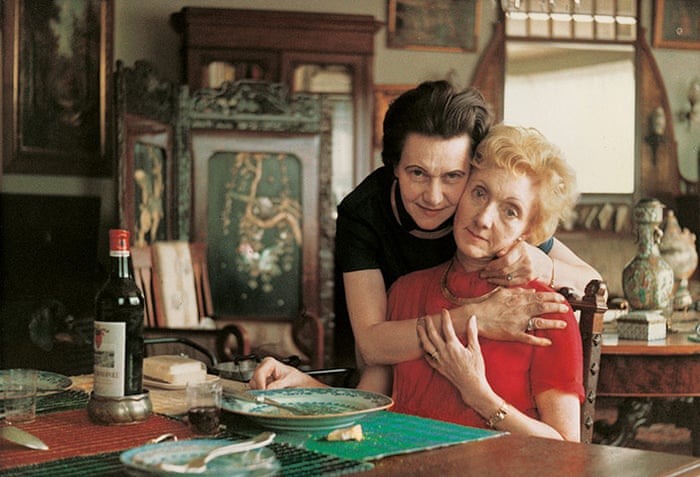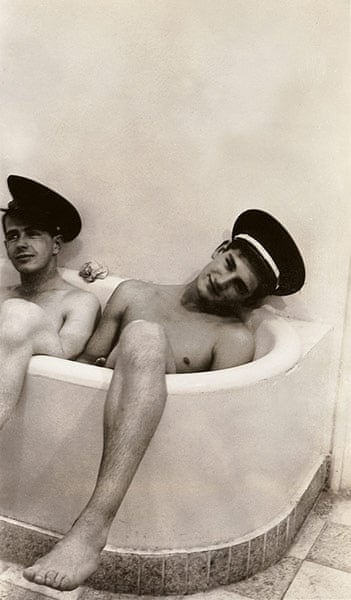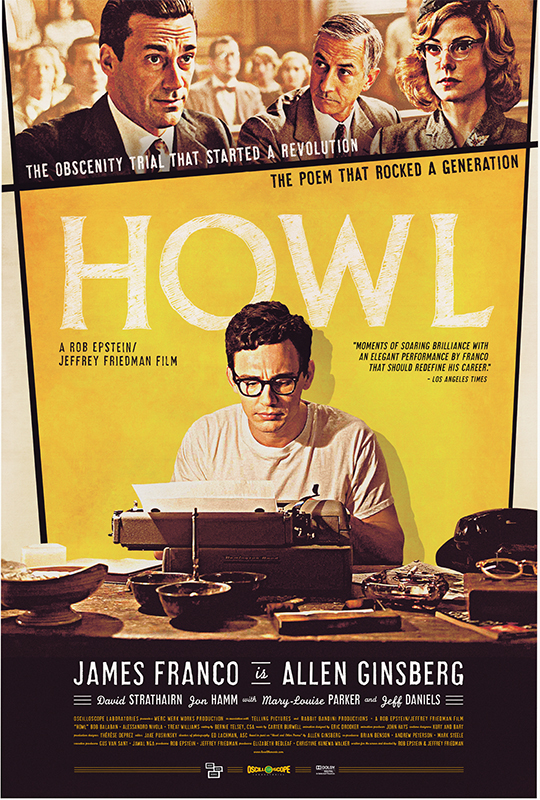A BIT OF SPORT
Same-sex love became demonised in 1895 at the trials and subsequent imprisonment of Oscar Wilde.
Before Wilde’s trial, sporty chaps would often be photographed sharing a seat, perhaps with one sitting upon another’s lap. Men would be photographed with heads touching, resting hands upon each other’s shoulders or thighs, conveying a comfort with each other and an ease at being seen together that way.
Same-sex friendship was seen as important, it was socially accepted. How many were actually aware that these men, these special friends, were often making love together, having - outrage - sex together?
A doctrinaire Freudian would have a field day studying the photographic props often used – bottles, cigars, pipes, canes, shot guns. Photographs with guns reflect the proliferation of firearms, the growing emphasis and almost obsessive desire to have an expertise with guns. The popularity of firearms was linked with masculinity.
Intimate, tender, even protective bonds were undoubtedly strongest in the army and navy, a little comfort surely went a long way when confronted by the threat of annihilation in the worst possible circumstances and there is ample evidence of same-sex activity within the forces, despite all the rules and regulations of the land.
I’ve discovered hand-holding lumberjacks from the Pacific Northwest, up for sale at photographic fairs beside shirtless marine buddies on a beach, hugging marine pals on a ship’s deck, marine mates in drag at an amusement park, or wrestling Brokeback Mountainstyle on an away-from-it-all (away-from-them-all) fishing trip.
Away from contact with the opposite sex, familiarity seemed to breed anything but contempt in schools, colleges and same-sex sporting activities where the persistant ambiguity of relationships was often caught by the camera. Same-sex couples, together in the brevity of youth, the uncertainty of war, in an age of other modes, other laws, when people of a homosexual disposition were under social pressure to be inconspicuous and discreet in their affection.
In terms of nineteenth century medical labelling, same-sex relationships were judged to be perverse, deviant.
Homosexuality was seen as an aberration, as it still is in over sixty countries in the world right now. Sexual attachment and desire were often construed or portrayed quite differently at different times, different places. Subjects consciously, often wilfully, had their photograph snapped to have their friendship documented. Relationships that could not, perhaps, be trapped in the cage of language or even sexual acting out, only documented in black and white, warm sepia tones, silver gelatin.
‘Artistic’ or ‘musical types’, as they were often referred as, were a niche clientele, often standing proudly before a camera to document their ‘special’ friendships with a photographer who’d keep their secret ‘safe’.
Many of the visuals were clearly taken at the height of the Victorian cult of friendship, a time when intense and even passionate bonds with members of their own sex were thought highly of.
A bit of sport…
Many early group photographs, especially sports-orientated pictures, reflect virility, newly-acquired adulthood, comfort, elation, attachment to each other. Homotactility reduced as the years went on, reflecting the drastically altered cultural climate since the trial of Oscar Wilde.
In the sex-centred age of Freud, photographs of men touching, looking affectionate, became newly problematic, with much anxiety over any hint of erotic exchange or emotional excess between men. For women, it was a different matter. Nothing there to frighten the horses. Sodomy. Anal penetration. Dicks ‘n’ arses, a no-go area.
WW1 severely disrupted patterns of gender relations and sexuality, plucking millions of young men and women from their homes, their towns and cities. Away from family, the environment of a largely heterosexual community, into sex-segregated situations which often led to situationalhomosexuality – all a matter of time and place, and maybe one drink too many amongst buddies. Our little secret, yeah mate?
Mourning the loss of a partner, perhaps within war-time, was a grief made more intense by the fact that it could not be expressed openly, within the family or beyond, such feelings had to be stifled – further emotional repression.
All Images and Text ©Hartnett/YOUTH CLUB
hartnett.uk.com








